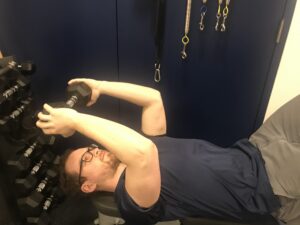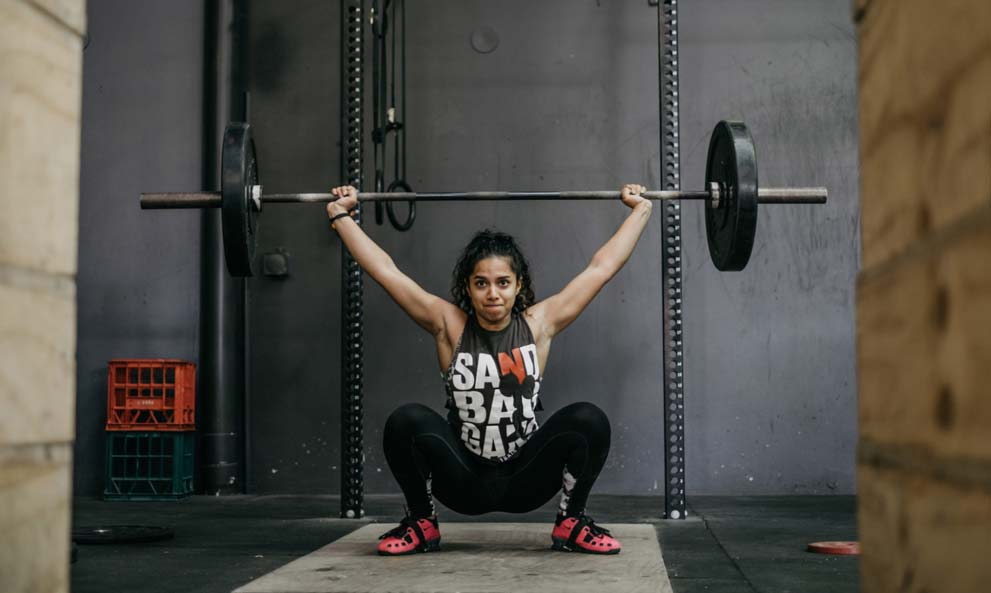by Physio Kush
Having worked with strength athletes over the years, I can safely say a common goal among most of them is to lift more weight / perform better. So, if you’re noticing that your performance is plateauing, what can you do?
There are a couple different ways to approach this, and none of them will be wrong!
You can work on broader things like technique changes, look at other factors like sleep/ nutrition/stress, or look at your biomechanics and muscle imbalances.
I’m going to focus here on the changes that you can make looking at the finer details of biomechanics and muscle imbalances.
If your preferred type of training is bigger compound strength movements such as squats / deadlifts / presses / cleans / snatches etc., it can be easy to neglect the smaller muscle groups; after all, shouldn’t they be working with these compound exercises anyway?
Well, what you may not realize, is that you can get really good at overusing some muscles and underusing others – this is the essence of a “muscle imbalance”. These can happen from learned patterns or from adaptation to past injuries – where your body has found a way to “cheat.” Now cheating isn’t necessarily a bad thing, it just might not be the most efficient or effective at reaching your performance goals. In these cases, you may be surprised how much your lifts can improve if you give those weaker or underused muscles a bit of specific attention.
It’s not often as fun to work on your accessories – you’re not lifting as heavy often, the movements themselves can sometimes be a little boring, and you’re focusing on normally weaker parts of your body and movement that you’re not good at. But if you consider the role of these in the bigger picture, it can have a massive payoff.
Some of the benefits of focusing on accessory movements and muscles groups are that you’ll:
- work on weaker muscle groups that limit the progression of your bigger lifts
- work on the muscle groups that address your muscle imbalances which may help you with any niggles that you’re feeling
- help re-pattern neural connections through different movements you don’t practice all the time; we also often perform accessories with less load so it’s a good time to help your body find different options to move and a different stimulus to your body and brain
I’ve heard people say, “The best way to do something is to do it often,” – but if your body has found a way to “cheat” then this is where accessories can be super helpful.
For example: if your overhead strength has plateaued – perhaps this might be due to a triceps weakness? When you try to press a weight overhead your brain can recruit other muscles but doesn’t send the same signals to the triceps – we’ve seen this at Synergy with many of our elite athletes who can lift a lot of weight but when isolated, their triceps can only press 3 pounds.

For sure, practicing overhead presses over and over again may improve your overall strength in time – you can even play with different variations like adding pauses, bands, and chains to change the stimulus – but how about if we simply add a few days a week of some isolated triceps accessory work?
This might help speed things along, and it’s also helpful to train your nervous system and body to now recruit these triceps across a variety of movements – this will make you more efficient, and with an extra boost from this new muscle strength, you could see a boost in your strength output in your more global lifts.
In the long run adding in accessory work like this can do wonders to not only your performance, but how movements also feel in your body.
Ideally, we customize which accessory movements we train based on a thorough assessment, where we look at your most meaningful lifts as the basis of our functional, whole body assessment. This framework is part of the innovative ConnectTherapy™ & Thoracic Ring Approach™ models, where we use hands-on manual techniques to assess your biomechanics during your goal movements – used by Physiotherapist Dr. LJ Lee for almost 20 years. The ConnectTherapy assessment framework provides a robust diagnostic that allows us to identify what regions of your body are most important to add accessory training for – we call these regions your “Drivers”.
This is a powerful tool – because when we design your accessory training for your Drivers, we see the greatest change in your whole body movement patterns & global output.
If you’d like some help and guidance with exercise selection towards your bigger goals – book an appointment today.
Kush Jayawardane is not only an experienced Physiotherapist trained in ConnectTherapy, but also a Certified Weight Lifting Coach. She’s worked with many strength athletes to help them reach their performance and injury-prevention goals. Read more about Kush here.

